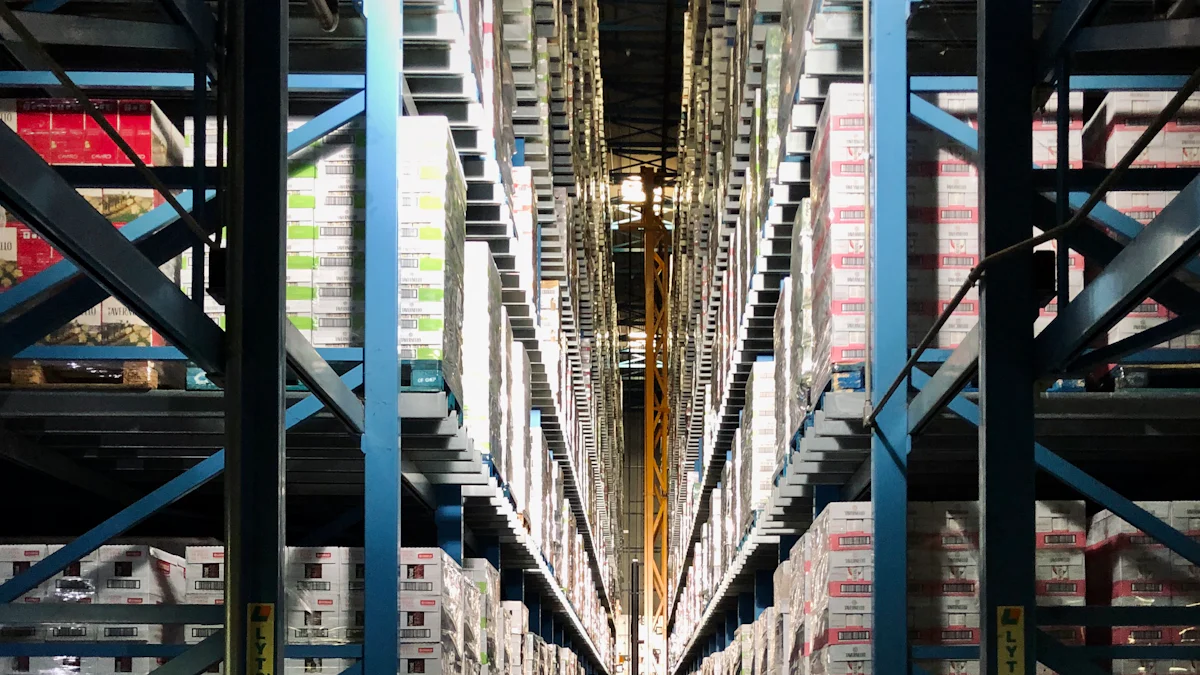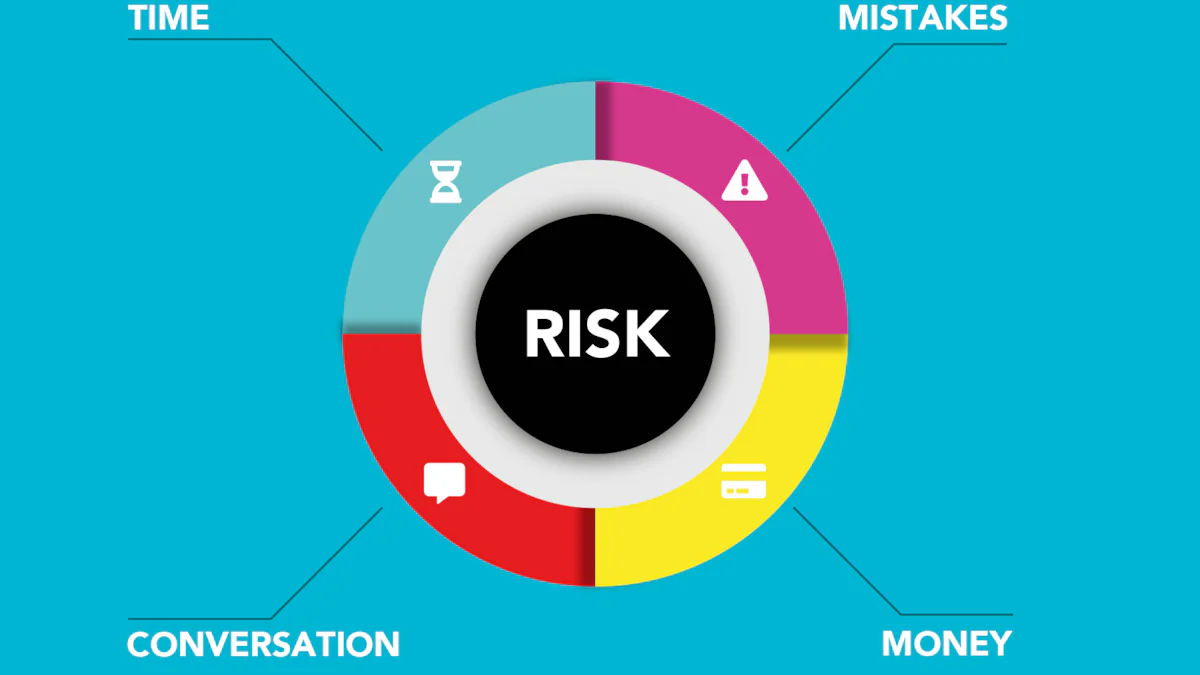Navigating Supply Chain Risks: A Comprehensive Guide to Mitigation

Managing supply chain risks holds immense importance for businesses today. Supply chain disruptions have become more frequent and severe. Over half of surveyed supply chain professionals found these disruptions extremely challenging. Functional supply chains are essential for business success, yet they face various risks that might disrupt operations and impact profitability. A structured approach to risk mitigation in supply chain management can help businesses navigate these challenges effectively.
Step 1: Identify Potential Risks

Conduct a Risk Assessment
Internal Risks
Internal risks come from within the organization. These risks might include issues like equipment failure, employee strikes, or production errors. Each of these can disrupt operations and cause delays. Companies need to regularly inspect machinery and train employees to minimize these risks. Regular audits can help identify potential internal problems before they escalate.
External Risks
External risks originate outside the organization. These can include natural disasters, political instability, or supplier failures. External risks often prove harder to control. Businesses should monitor global events and maintain strong relationships with suppliers. Diversifying suppliers can also reduce dependency on a single source. This strategy helps mitigate the impact of external disruptions.
Use Risk Identification Tools
SWOT Analysis
SWOT Analysis stands for Strengths, Weaknesses, Opportunities, and Threats. This tool helps businesses understand their internal and external environments. Strengths and weaknesses focus on internal factors. Opportunities and threats look at external factors. Conducting a SWOT analysis provides a clear picture of potential risks. This clarity helps in planning effective risk management strategies.
Risk Mapping
Risk mapping visually represents potential risks and their impacts. This tool helps prioritize risks based on severity and likelihood. Companies can create a risk map by listing all identified risks and plotting them on a chart. The chart should have two axes: one for impact and one for likelihood. High-impact, high-likelihood risks should receive immediate attention. Risk mapping aids in focusing resources on the most critical areas.
Step 2: Prioritize Risks
Evaluate Risk Impact
Financial Impact
Financial impact refers to the monetary consequences of supply chain disruptions. Companies must assess how risks affect revenue, costs, and profitability. For example, a supplier failure might lead to increased expenses for finding new suppliers. Businesses should calculate potential losses from each identified risk. This helps in understanding the financial stakes involved.
Operational Impact
Operational impact looks at how risks disrupt daily activities. Delays in production or delivery can halt operations. Equipment failure or employee strikes can cause significant downtime. Companies need to evaluate how each risk affects workflow and productivity. Understanding operational impacts helps in planning effective responses.
Rank Risks by Severity
High, Medium, Low Categories
Ranking risks by severity involves categorizing them based on their impact and likelihood. High-severity risks pose the greatest threat and require immediate attention. Medium-severity risks need monitoring and contingency plans. Low-severity risks can be managed with minimal resources. Companies should use a scoring system to rank risks. This ensures that resources focus on the most critical areas.
Step 3: Develop Risk Mitigation Strategies
Create Contingency Plans
Alternative Suppliers
Companies need backup suppliers to reduce dependency risks. Relying on one supplier can cause major disruptions if that supplier fails. Businesses should identify and establish relationships with multiple suppliers. This strategy ensures a steady supply of materials even if one source becomes unavailable.
Inventory Buffers
Maintaining inventory buffers helps mitigate shortages. Extra stock acts as a cushion against unexpected disruptions. Companies should calculate optimal buffer levels based on demand patterns and lead times. Regularly reviewing and adjusting inventory levels ensures readiness for sudden changes.
Implement Risk Transfer Mechanisms
Insurance
Insurance provides financial protection against various risks. Companies should explore different types of insurance policies. Coverage might include natural disasters, theft, or supplier failures. Businesses need to assess their specific risks and choose appropriate policies. Insurance helps transfer the financial burden of unexpected events.
Contracts
Contracts play a crucial role in risk management. Clear and detailed contracts with suppliers set expectations and responsibilities. Including clauses for penalties, delays, and quality issues protects the company. Regularly reviewing and updating contracts ensures they remain relevant and effective. Contracts help manage and transfer risks in business relationships.
Step 4: Monitor and Review Risks
Establish Monitoring Systems
Key Risk Indicators (KRIs)
Key Risk Indicators (KRIs) help track potential risks in real-time. KRIs provide early warnings about possible issues. Companies should select KRIs that align with their specific risks. For example, tracking supplier delivery times can indicate potential delays. Monitoring inventory levels can show supply shortages. Effective KRIs offer insights into risk trends and patterns. Businesses can then take proactive measures to address these risks.
Regular Audits
Regular audits ensure the effectiveness of risk management strategies. Audits involve a thorough review of processes and controls. Companies should schedule audits at regular intervals. Internal teams or external experts can conduct these audits. Audits help identify gaps in current risk management practices. Addressing these gaps strengthens the overall risk management framework. Consistent audits keep the organization prepared for unexpected events.
Conduct Periodic Reviews
Quarterly Reviews
Quarterly reviews provide a structured approach to risk management. These reviews assess the effectiveness of current strategies. Companies should analyze KRIs and audit findings during these reviews. Quarterly reviews help identify emerging risks. Businesses can then adjust their risk mitigation plans accordingly. Regular reviews ensure that risk management remains dynamic and responsive.
Annual Reviews
Annual reviews offer a comprehensive evaluation of the risk management framework. These reviews cover all aspects of risk identification, prioritization, and mitigation. Companies should compare annual performance against set objectives. Annual reviews help in long-term strategic planning. Businesses can use these reviews to update their risk management policies. A thorough annual review ensures sustained resilience against supply chain disruptions.
Step 5: Foster a Risk-Aware Culture
Creating a risk-aware culture within an organization enhances its ability to manage supply chain risks effectively. A culture that prioritizes risk awareness ensures that every employee understands the importance of proactive risk management.
Train Employees
Risk Management Workshops
Risk management workshops provide employees with essential knowledge and skills. These workshops cover various risk scenarios and teach practical strategies for mitigating them. Employees learn to identify potential risks and respond appropriately. Regular workshops keep everyone updated on the latest risk management practices.
Continuous Learning Programs
Continuous learning programs ensure that employees stay informed about emerging risks. These programs offer ongoing education through online courses, seminars, and training sessions. Employees can access resources at their convenience, allowing for flexible learning. Continuous learning fosters a culture of vigilance and preparedness.
Encourage Open Communication
Feedback Mechanisms
Feedback mechanisms allow employees to share insights and concerns about potential risks. Companies can set up suggestion boxes, online forums, or regular meetings for this purpose. Encouraging feedback helps identify risks that might otherwise go unnoticed. Open communication channels promote a collaborative approach to risk management.
Reporting Systems
Reporting systems provide a structured way for employees to report risks. Clear protocols ensure that reports reach the right people promptly. Companies can use software tools to streamline the reporting process. Effective reporting systems enable quick responses to emerging risks, minimizing potential disruptions.
Peter Drucker, a renowned management guru, famously said, "Culture eats strategy for breakfast." This quote highlights the importance of fostering a strong risk-aware culture over merely having strategies in place.
A risk-aware culture empowers employees to take ownership of risk management. Training and open communication create a proactive environment where risks are identified and addressed swiftly.
Step 6: Leverage Technology for Risk Mitigation in Supply Chain

Technology plays a crucial role in managing supply chain risks. Leveraging the right tools can streamline processes and enhance visibility. This section explores two key technological approaches: using risk management software and integrating data analytics.
Use Risk Management Software
Risk management software centralizes and simplifies the process of managing supply chain risks. This software helps businesses stay organized and proactive.
Features to Look For
When selecting risk management software, look for features that address specific needs:
Centralized Dashboard: A single interface to monitor all risks.
Automated Alerts: Notifications for potential issues.
Vendor Management: Tools to assess and rate suppliers.
Compliance Tracking: Ensures adherence to regulations.
Reporting Tools: Generates detailed risk reports.
These features help businesses manage supplier assessments, vendor relationships, and periodic reviews efficiently.
Implementation Tips
Implementing risk management software requires careful planning:
Assess Needs: Identify the specific risks and requirements.
Choose the Right Software: Select a solution that fits the business size and complexity.
Train Employees: Provide training sessions to ensure proper usage.
Monitor Performance: Regularly review the software's effectiveness.
Update Regularly: Keep the software updated to leverage new features and improvements.
Following these tips ensures smooth integration and maximizes the benefits of the software.
Integrate Data Analytics for Risk Mitigation in Supply Chain
Data analytics offers powerful insights into supply chain risks. Using data-driven approaches helps in predicting and mitigating risks effectively.
Predictive Analytics
Predictive analytics uses historical data to forecast future risks. This approach helps in anticipating potential disruptions:
Trend Analysis: Identifies patterns and trends in supply chain data.
Risk Forecasting: Predicts possible risks based on past events.
Scenario Planning: Models different scenarios to prepare for various outcomes.
Predictive analytics enables businesses to take preemptive actions and minimize disruptions.
Real-Time Monitoring
Real-time monitoring provides up-to-the-minute information on supply chain activities. This approach enhances visibility and control:
Live Data Feeds: Continuous updates on inventory levels, shipments, and supplier performance.
Immediate Alerts: Instant notifications for any deviations or issues.
Dashboard Views: Visual representation of real-time data for quick decision-making.
Real-time monitoring helps businesses respond swiftly to emerging risks and maintain smooth operations.
Managing supply chain risks requires a structured approach. The six steps outlined—identifying potential risks, prioritizing them, developing mitigation strategies, monitoring and reviewing, fostering a risk-aware culture, and leveraging technology—provide a comprehensive framework. Proactive risk management ensures business continuity and resilience. Implementing these steps can significantly enhance supply chain stability.
For further insights, explore additional resources and tools that offer advanced techniques for risk mitigation in supply chain management.
See Also
Effective Strategies for Managing Supply Chain Risks
Becoming a Supply Chain Risk Management Pro: Insider Advice
Navigating Supply Chain Risks: Essential Management Guide
Don't Underestimate Supply Chain Risks: Secure Your Business Now
